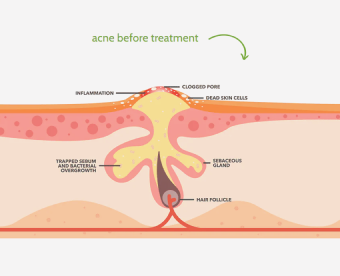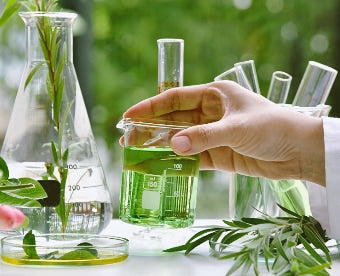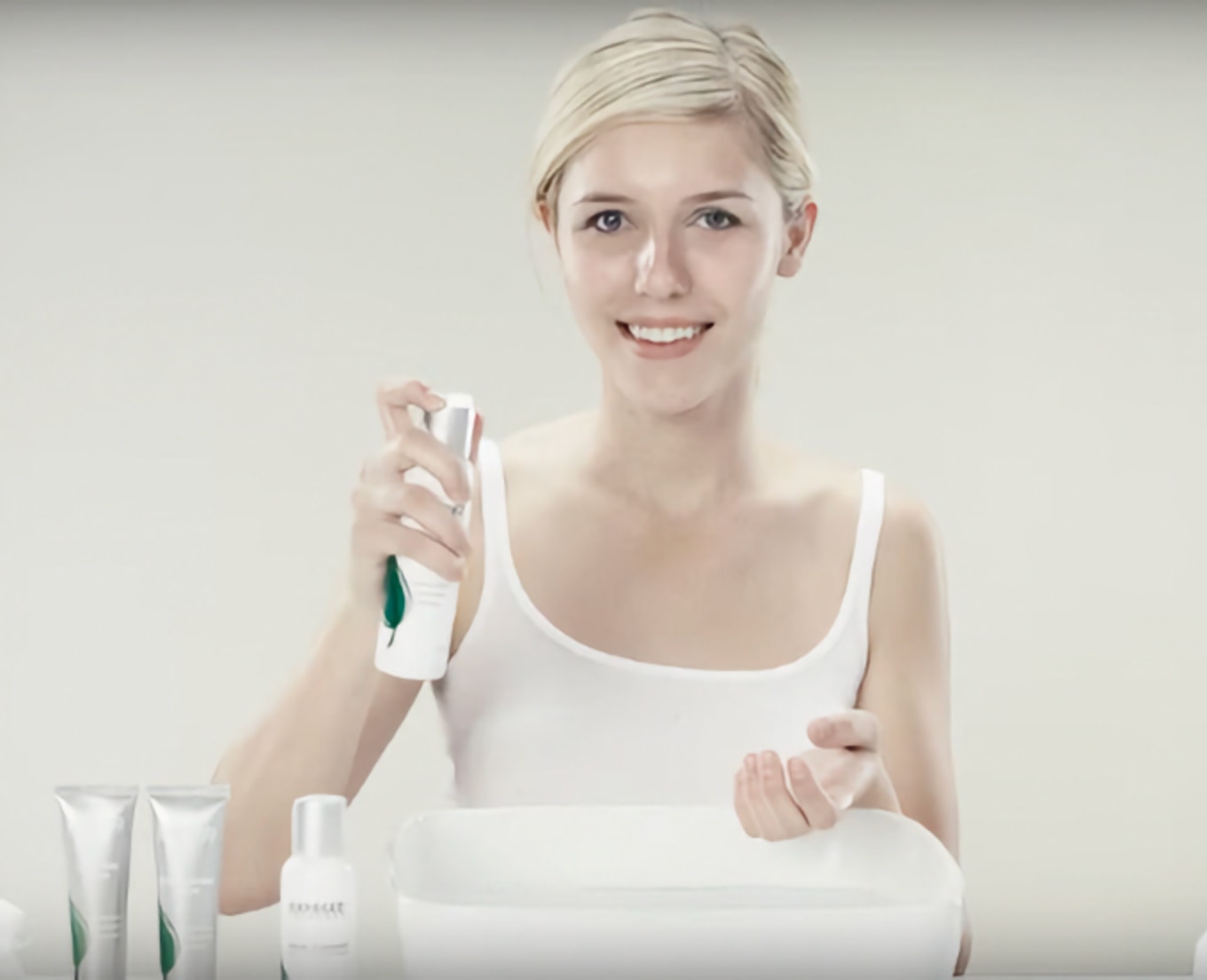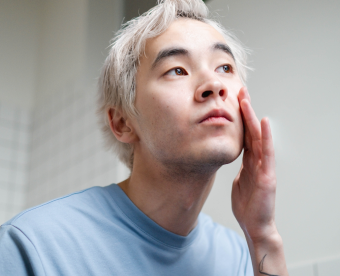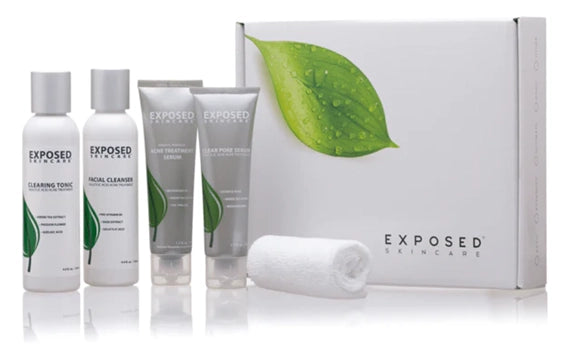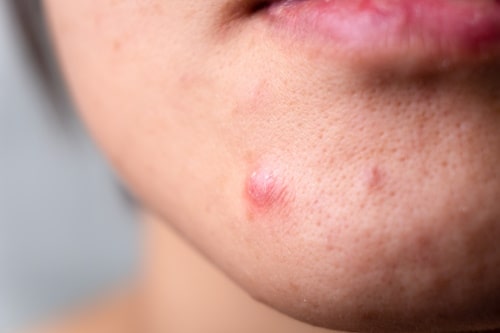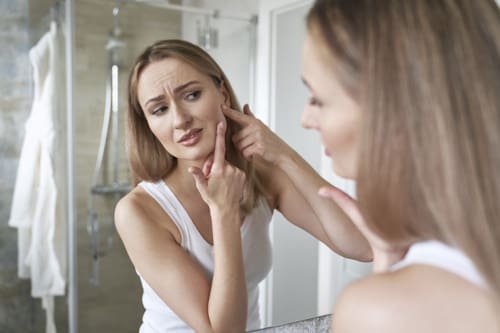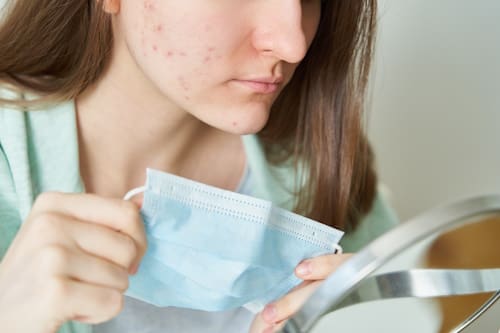Acne is an unfortunate but common skin condition that affects people everywhere. However, many are less familiar with a severe form of acne known ascluster acne. This condition can be deeply distressing, both physically and emotionally. Hence, this comprehensive guide will break down the complexities of cluster acne, from its causes to various treatments, and offer advice to maintain healthy skin.
Also read: How to choose the best acne treatment
Biggest Take-Aways:
- Cluster acne is a severe form of acne featuring clusters of lesions resulting from factors like the overproduction of sebum, hormonal fluctuations, and the build-up of dead skin cells.
- Proper identification of cluster acne, which can include a variety of pimples like blackheads, whiteheads, and cysts, is crucial for effective treatment.
- Preventative measures such as a diligent skincare routine and a balanced diet, combined with treatments like over-the-counter acne products, topical antibiotics, and retinoids, can help manage cluster acne.
- Exposed Skin Care can effectively treat various types of acne, prevent acne formation, target underlying issues, and promote clear skin.

What Is Cluster Acne?
Cluster acne, also termed clustered acne, is a type of acne that appears in groups or clusters. Unlike the occasional pimple on your forehead or lower face, cluster acne manifests as multiple bumps on the skin situated closely together. The clusters often include a variety of lesions like whiteheads, blackheads, small pimples, and more severe forms such as nodular or cystic acne.
Why Does Cluster Acne Occur?
Cluster acne, like other types of acne, primarily results from clogged pores. However, many factors contribute to the severity and clustering of acne lesions.
Overproduction of Sebum
Excessive sebum production can lead to cluster acne. Sebum is an oily substance secreted by the skin’s glands. An overabundance of sebum can combine with dead skin cells to clog pores, causing a breakout.
Hormonal Fluctuations
Hormonal changes often lead to cluster acne. This is particularly common during puberty, menstruation, and pregnancy when hormonal acne tends to flare up.

Build-up of Dead Skin Cells
Dead skin cells can accumulate and clog pores. These cells can create a breeding ground for acne when mixed with sebum.
Certain Medications and Cosmetic Products
Some medications, including certain hormonal treatments and corticosteroids, can contribute to acne. Additionally, oil-based cosmetics and hair products that contain certain oils can clog pores and instigate a cluster acne breakout.
Recognizing Cluster Acne: What Does It Look Like?
Cluster acne can be identified by the appearance of multiple acne lesions in a small area of skin. These can include:
-
Papules and Pustules: Papules are red or pink bumps that are often painful to the touch, while pustules are red bumps with white or yellow pus-filled tops.
-
Nodules and Cysts: Nodules are hard, painful bumps deep in the skin, while cysts are large, soft, pus-filled bumps that look a lot like boils.
-
Blackheads and Whiteheads: Also known as comedones, these are small bumps that form when a pore gets clogged by oil and skin cells. When the clog is deep within the skin, it's a whitehead. If the clog is exposed to air, it oxidizes and turns black, becoming a blackhead.

How Can You Treat Cluster Accolades?
Tackling cluster acne requires a proactive approach. Here are some effective treatment methods:
Over-the-Counter Acne Products
Numerous over-the-counter acne treatments can help manage cluster acne. These usually contain ingredients like salicylic acid or benzoyl peroxide, which help get rid of excess oil, unclog pores, and reduce inflammation.
Topical Antibiotics
Topical antibiotics can reduce bacteria and inflammation, helping to manage cluster acne. They are often combined with other treatments for the best effect.
Use of Retinoids
Topical retinoids, derived from vitamin A, can prevent clogged pores by promoting the turnover of skin cells. These creams can treat various forms of acne, including whiteheads, blackheads, and inflammatory acne.
Skin Care Routine: A Preventative Measure
Implementing a diligent skincare routine can help prevent the formation of cluster acne.
-
Cleanse: Regularly wash your face to remove excess oil and dead skin cells. Avoid harsh scrubbing, as this can irritate the skin and worsen acne.
-
Sun Protection: Extended exposure to the sun can worsen acne and lead to dark spots and scarring. Use a broad-spectrum sunscreen daily.
-
Avoid Picking: It can be tempting to pick at acne lesions, but this should be avoided as it can lead to scarring and infection.
-
Moisturize: Look for non-comedogenic (non-pore-clogging) moisturizers to keep your skin hydrated without contributing to acne.

The Impact of Diet on Cluster Acne
Diet doesn't directly cause acne, but certain foods may contribute to acne for some people. Some studies have linked high glycemic foods and dairy products to acne. Opting for a balanced diet rich in fruits, vegetables, lean protein, and whole grains may help manage or reduce acne.
When Cluster Acne Resembles Other Conditions
Sometimes, acne-like conditions can be mistaken for cluster acne. These include:
-
Razor Bumps: These are small, irritated bumps that appear after shaving. They're caused by strands of hair curling back on themselves and growing into the skin.
-
Folliculitis: This condition results from inflamed hair follicles. It looks like acne but can occur anywhere on the body where hair grows, like the buttock.
-
Rosacea: This causes redness, swelling, and acne-like breakouts. It usually affects the cheeks, forehead, chin, and nose.
-
Keratosis Pilaris: This condition causes rough patches and small acne-like bumps, usually on the arms, thighs, cheeks, and buttocks.
-
Skin Cancer: While rare, some types of skin cancer may initially look like acne. If a bump is bleeding, changing color, or increasing in size, seek medical attention immediately.
The Benefits of Using Exposed Skin Care
Exposed Skin Care is an acclaimed product line designed to manage various types of acne, ranging from mild acne to more severe types, including nodular acne.
Here are a few key benefits of this product line:
-
Effective Against Various Acne Types: Whether you're dealing with a scattering of whiteheads and blackheads along your forehead or a more severe type of acne that causes painful nodules on your lower face or jawline, Exposed Skin Care can help.
-
Prevents Acne Formation: The products in this line can inhibit the formation of acne, reducing the likelihood of coming into contact with acne-inducing bacteria.
-
Targets Underlying Issues: These products don't just clear blemishes on the skin's surface. They delve deep underneath the skin to address root causes.
-
Suitable for All Skin Types: Whether your skin is dry, oily, or both, Exposed Skin Care can be an effective solution, less likely to cause further irritation.
Regular use of Exposed Skin Care can lead to clear skin, free of pus-filled lesions and unsightly skin blemishes. With consistent use, it can effectively treat severe acne, leading to healthier skin.
Conclusion
Dealing with acne, especially cluster acne, is undoubtedly a challenging journey. The condition can vary from mild forms, such as whiteheads and blackheads, to more severe types, including pus-filled nodular acne. Understanding the causes and implementing an effective skincare regimen are the first steps toward managing this skin condition.
Over-the-counter products like Exposed Skin Care can be beneficial. These products are designed to treat acne at its source, underneath the skin, addressing the visible blemishes and the root causes. This comprehensive approach can help reduce acne formation and promote clear, healthier skin over time. With patience, consistency, and the right care, it's possible to manage and even overcome the difficulties of cluster acne.
FAQs
What are the different types of pimples in cluster acne?
Cluster acne can include a variety of pimples, such as whiteheads, blackheads, papules, pustules, nodules, and cysts.
Can I prevent cluster acne?
While you can't completely prevent acne, maintaining a good skincare routine, having a healthy diet, and using suitable acne products can reduce the risk of cluster acne.
What causes acne around the mouth?
Acne around the mouth, often known as perioral acne, can be caused by hormonal fluctuations, using the wrong skincare products, or habits such as touching the face frequently.
Is cluster acne painful?
Cluster acne can be painful, especially when it involves inflammatory acne such as cysts and nodules. These lesions occur deep under the skin, leading to discomfort.
What's the difference between a cyst and a nodule?
Cysts are large, soft, pus-filled bumps, whereas nodules are hard and painful bumps deep within the skin.

